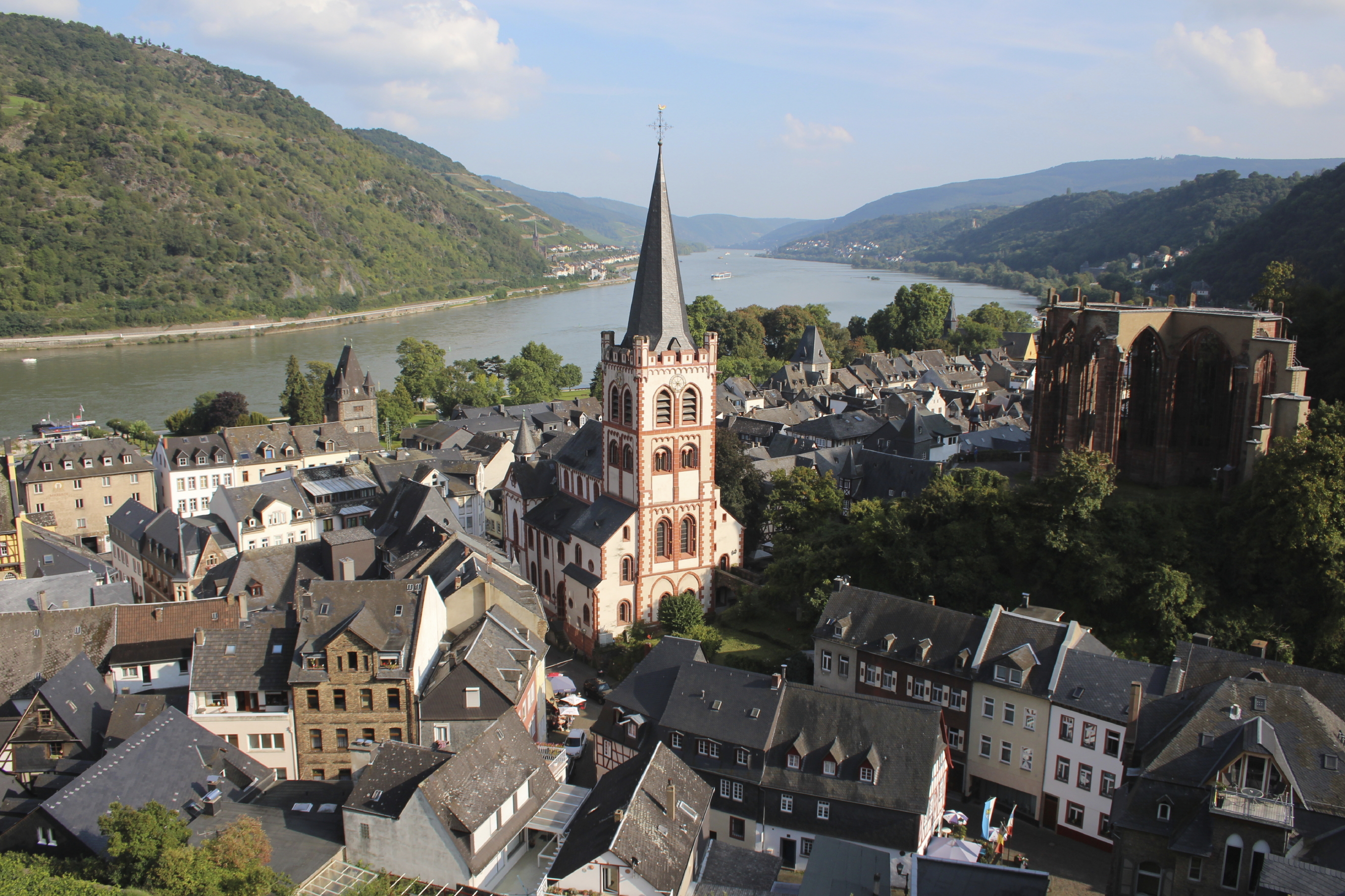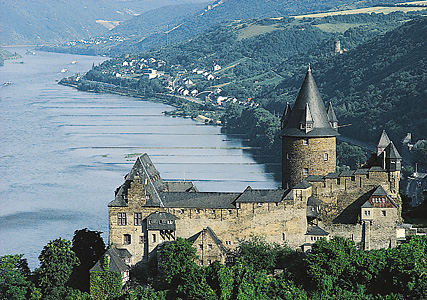Rhine, << ryn, >> River is an important inland waterway in Europe. It is about 820 miles (1,320 kilometers) long and drains an area of about 86,700 square miles (224,600 square kilometers). The river rises in eastern Switzerland. It forms part of the borders of Switzerland, Liechtenstein, Austria, France, and Germany. It flows through Germany and the Netherlands into the North Sea. Many German legends relate to the Rhine (Rhein in German).
The Rhine serves as a means of transporting goods through central Europe. Many cities and industries are located near the river. During the 1900’s, industrial waste and urban sewage polluted the Rhine. Countries along the river worked together to reduce the pollution.

The course of the Rhine.
Two glacier-fed mountain torrents rise and flow eastward in the high Alps of eastern Switzerland, close to the Italian border. One is the Vorder Rhine, and the other is the Hinter Rhine. From their union, the Rhine flows along the western borders of Liechtenstein and Austria to Lake Constance, 1,306 feet (398 meters) above the sea. This lake sends the river westward to tumble over a fall 70 feet (21 meters) high at Schaffhausen. From there the Rhine flows between Germany and Switzerland to Basel. This city serves as landlocked Switzerland’s principal port.

North of Basel, the Rhine flows between the Black Forest on the east and Vosges Mountains on the west. It follows a course down the middle of a plain that is about 20 miles (32 kilometers) wide and 180 miles (290 kilometers) long. In the southern part of the plain, the Rhine serves as the boundary between France and Germany.
From Basel, the river gradually widens, and at Bingen, it leaves the plain and travels through a narrow gorge in the Rhenish Slate Mountains. A cliff called the Lorelei stands along this section. According to legend, a siren here lures boatmen to destruction with her song (see Lorelei). The legends of Roland, Siegfried, and other historic and mythical figures also developed in this region. At Bonn, the river and valley widen again as the Rhine enters the North German Plain on its journey to the Netherlands and its broad delta leading into the North Sea.
Along its course, the Rhine receives the waters of the Neckar, Main, Lahn, Ruhr, and Lippe rivers from the east. The Nahe and Moselle rivers flow into the Rhine from the west. Canals connect the Rhine to the Danube, Elbe, Ems, Marne, Oder, Rhone, and Weser rivers and so make the Rhine part of a great inland navigation system. North of Basel, major Rhine ports are Strasbourg, Mannheim, Cologne, Duisburg, and Rotterdam. Duisburg is the gateway to the industrial Ruhr Valley.
The Rhine in history.
The Rhine has played an important role in Europe since the time of ancient Rome. For 400 years, the Rhine was the boundary between the Romans and the Germanic tribes. On the west bank of the Rhine grew up the Roman cities of Colonia Agrippinensis (Cologne), Bonna (Bonn), Confluentes (Koblenz), Mogontiacum (Mainz), all in Germany; Argentoratum (Strasbourg), in France; and Basilia (Basel), in Switzerland. During the Middle Ages, the Rhine was under German rule from Basel to the Netherlands. But in 1648, at the close of the Thirty Years’ War, France gained a foothold on the western bank of the Rhine. This started a struggle between France and Germany that lasted into the 1900’s.

King Louis XIV made gains in the Rhine Valley, and Napoleon extended French control into the Rhineland. Even after Napoleon was defeated, Alsace, which borders the Rhine from Switzerland to beyond Strasbourg, remained in French hands. But Germany gained almost all of Alsace and northern Lorraine in 1871.
The same territory was battled over in World War I (1914-1918). The Treaty of Versailles returned Alsace and Lorraine to France, again extending that country’s domain to the Rhine. Germany signed an agreement not to fortify the Rhineland. In 1936, German dictator Adolf Hitler violated this agreement and began to militarize the region. During World War II, heavy fighting occurred along the Rhine in the last part of the European struggle. After the war, the river again became one of the world’s busiest waterways.
See also Lorelei; Moselle River; Mouse Tower; Rhineland.
